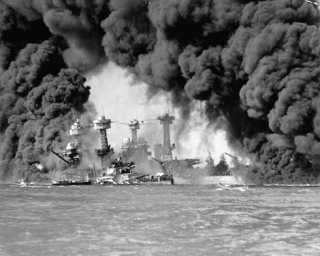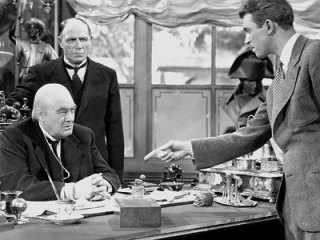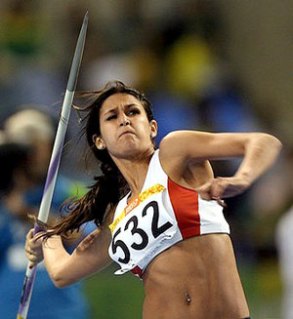Fun Facts About Christmas Lights
-

The General Electric Christmas lighting outfit, the first set offered for sale to the public. Circa 1903-1904.
The inventors of electric Christmas lights are Thomas Edison and Edward Johnson
- Before electric Christmas lights, families would use candles to light up their Christmas trees. This practice was often dangerous and led to many home fires.
- Edward H. Johnson put the very first string of electric Christmas tree lights together in 1882. Johnson, Edison’s friend and partner in the Edison’s Illumination Company, hand-wired 80 red, white and blue light bulbs and wound them around his Christmas tree. Not only was the tree illuminated with electricity, it also revolved.
- During the Christmas season of 1880, strands of lights were strung around the outside of Edison’s Menlo Park Laboratory. Railroad passengers traveling by got their first look at an electrical light display.
- General Electric was the first company to offer pre-wired Christmas light strings. Prior to this, lights had to be hand wired on the tree. GE was unable to patent their string (or festoon), and suddenly the market was open to anyone who wanted to manufacture the strings.
-
In 1895, U.S. President Grover Cleveland proudly sponsored the first electrically lit Christmas tree in the White House.
- In 1901, The first commercially produced Christmas tree lamps were manufactured in strings of nine sockets by the Edison General Electric Co. of Harrison, New Jersey.
- It was a common but incorrect belief in the early days of electric Christmas lighting that Christmas light bulbs would burn longer in an upright position. Early decorators spent a lot of time making sure that the lamps were positioned upright on the tree.
- Many of the earliest figural light bulbs representing fruit, flowers and holiday figures were blown in molds that were also used to make small glass ornaments. These figural lights were painted by toy makers.
- Many of the earliest Christmas lights burned so hot that they were about as dangerous as the candles they were advertised to replace.
-

Ink Blotter advertising General Electric's new pre-wired sets of Christmas lights. The artwork is a direct copy of General Electric's cover art for their 1904 booklet advertising their first set of Christmas lights.
Early in their history, Christmas lights were so expensive that they were more commonly rented than sold. An electrically lighted tree was a status symbol in the early 1900s.
- Until 1903, when General Electric began to offer pre-assembled kits of Christmas lights, stringed lights were reserved for the wealthy and electrically savvy.
- The wiring of electric lights was very expensive and required the hiring of the services of a wireman, our modern-day electrician. According to some, to light an average Christmas tree with electric lights before 1903 would have cost $2000.00 in today’s dollars.
-
Albert Sadacca saw a future in selling electric Christmas lights. The Sadacca family owned a novelty lighting company and in 1917 Albert, a teenager at the time, suggested that its store offer brightly colored strands of Christmas lights to the public.
- Christmas lights were first advertised in the Ladies Home Journal.
- True outdoor Christmas lights were not introduced to the public until 1927-1928, almost 45 years after the first electric tree lights were demonstrated. There were sets offered for sale as safe to use outside before 1927, but they were small, dangerous and extremely impractical for the average family.
- By the 1920’s Albert Sadacca and his brothers organized the National Outfit Manufacturers Association (NOMA), a trade association. NOMA soon became NOMA Electric Co., with its members cornering the Christmas light market until the 1960’s.
-
On Christmas Eve 1923, President Calvin Coolidge began the country’s celebration of Christmas by lighting the National Christmas Tree with 3,000 electric lights on the Ellipse located south of the White House.
- Montgomery Wards inadvertently gave the American public two well known Christmas treasures: the bubble light and Rudolph, The Red Nosed Reindeer. The original story of Rudolph, a bit different than the one we know today, first appeared in a children’s giveaway booklet in 1939. The character became a runaway hit. Also, Carl Otis, the inventor of the bubble light, worked as an accountant for the company. Wards did not sponsor Carl’s invention, and he eventually sold it to NOMA. It became the biggest selling Christmas light in history up to that time.
- Electrically lit trees did not become “universal” in the United States until after World War II.
-
Largest Cut Christmas Tree was a 221 foot Douglas fir at Northgate Shopping Center, Seattle, Washington, USA, in December 1950. (Guiness Book of World Records)
- It is interesting to note that while Christmas is a uniquely Christian holiday, most of the major Christmas lighting companies were owned and operated by people of the Jewish faith.
Special thanks to tackylighttour.com, loc.gov and oldchristmastreelights.com










































 The Mind of Adam J. Kovitz
The Mind of Adam J. Kovitz
Howard Cosell: One-time Lawyer Turned Sportscasting Legend
Howard Cosell
Fun Facts About Howard Cosell
He was asked by Robert Pauley to get sponsorship if he wanted a show weekly on ABC Radio. He surprised Pauley by getting sponsorship from his relative and Pauley gave him a show. In time, he would become a prominent personality on television, yet he never stopped working on radio. His popularity reached its zenith when he covered Muhammad Ali. Cosell was famous for narrating the facts ‘As it is like’ and his sense of style and facts actually changed the entire sports broadcasting industry. Unlike other reporters, Howard always involved a bit of intellectualism in his commentary and thus was able to give his personal analysis on the game instantly.
Special thanks to www.livetvcenter.com
Share this:
2 Comments
Filed under Entertainment, Sports, Television
Tagged as ABC, ABC Radio, ABC Sports, actor, actors, American, Army Transportation Corp, As it is like, bar, broadcast, broadcasting, Brooklyn, cadet, commentator, Cosell, degree, English, football, game, heart embolism, Howard Cosell, Howard Williams Cosell, intellectualism, Jackie Robinson, lawyer, Little League, Major, Manhattan, Mary Abrams, Monday Night Football, Muhammad Ali, NC, New York, New York University, North Carolina, NY, personal analysis, personality, practice, radio, Robert Pauley, School of Law, show, sponsorship, sportcaster, sports, sports broadcasting industry, sports commentary, sports journalist, sportscaster, sportscasting, sportspeople, state bar, state bar of New York, television, Union Law, United States of America, University of New York, voice, Willy Mays, World War II